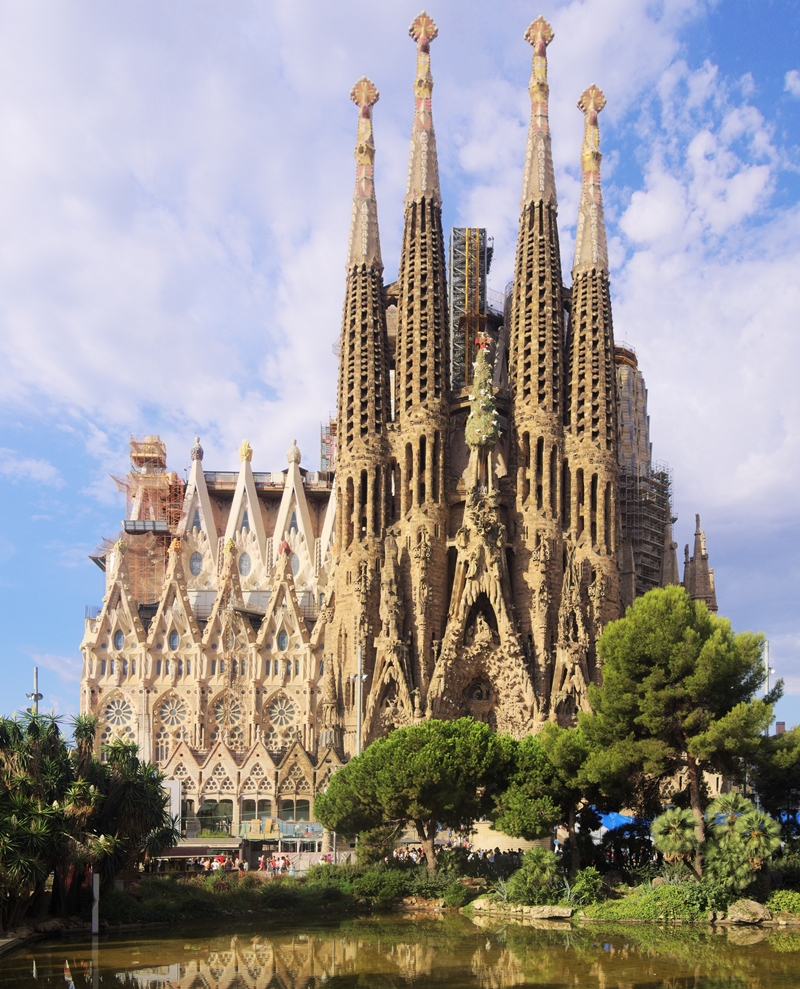The size of your church is no big deal. The lesson is that great structures should be conceived and constructed with great humility or they amount to nothing.
Susanna Vas
“Why do you need such grand churches?”
You’re stumped and blinking at the question or fumbling for a sharp comeback. If you belong to a church answering that description or fancy those that do, you’ve probably spent a sleepless night or two pondering the question even if no one put it to you.
How do we perceive and rationalise simplicity and splendour in church architecture?
Never the Twain Shall Meet?
Jesus had a triple-ministry as prophet, priest, and king. Certain events in the Gospels squarely correspond to one of the three. The Sermon on the Mount and the Last Supper affirmed His priesthood. Both unfolded in modest venues, one God-made (a hill) and one man-made (the upper room). The upper room became the template for the altar. However, because His was a unified triple-ministry, the moments of glory and the moments of simplicity ultimately fulfil all three functions.
The Gospels give us an interesting medley of venues for these moments: a stable, synagogues, a banquet hall, hills and mountains, homes, fishing boats, water bodies, a desert, and a sepulchre. Jesus never commissioned any of these structures, but consciously chose to reveal His divinity and the will of God in them.
Simplicity and splendour are harmonious aspects of Christ Who famously and seamlessly united the irreconcilable through His nature—fully God and fully man. Ideally, church architecture should synthesise and reflect this unity. Approaching the structure with denominational conditioning results in equating God and godliness with either majesty or modesty instead of finding them in both.
Purposes, Problems, and Possibilities
Our endorsement, preference, and defence of simplicity and splendour should be prudent lest we turn ideas and ideological positions into idols. Architecture and decor can inspire and facilitate worship and reverence without becoming idols themselves.
Magnificent churches elevate the senses; they do not exalt them. Their embellishments and furnishings do not constitute some high-class, high-culture semiotic. Likewise, simple churches discipline the senses; they do not dull them. Their starkness does not point to inferiority, apathy, or miserliness.
Outward appearances and interior decor do not necessarily impact or reflect churchgoers’ interior lives. Sensory grandeur can coexist with spiritual impoverishment; so can sensory denial and spiritual enrichment. Double-positives and double-negatives are also possible.
Art for God’s Sake
We have heard of art for art’s sake and art for the artist’s sake. Because church art is for God’s sake, it demands a Non nobis approach from the artists. In the Old Testament, God commands people to build the Ark of the Covenant and the Temple. He invites skilled metalworkers, woodworkers, and embroiderers to participate in the project but keeps their egos in check.
Choosing the style, amount, and purpose of art is challenging because splendour and majesty are often confused for ostentation. What is the difference between David’s psalms and the Pharisees’ prayers? Both used exquisite language, but God delighted in David’s words and denounced the Pharisees’. Art is the artist’s prayer and testimony. But is it like David’s or the Pharisees’? We know the psalms are David’s words, but because of their universal resonance, we can confess them as our own. Though the artist’s handiwork bears his stylistic signature, it is also self-effacing, so anyone who approaches or contemplates it may feel a close emotional and spiritual affinity with the subject.
Is art still a prayer if the artist is financially compensated? Does payment cheapen the spiritual value of the artwork? To answer these questions, we must understand that volunteer work is well-nigh impossible, given the position of artists in society, as well as the role of money and availability of resources in the modern world. As art is work and work is prayer, artists deserve their dues. It’s one thing to make art for money and a whole other thing to make it for the love of money.
Conclusion
Solomon’s Temple and the Tower of Babel were both monumental undertakings. Here, too, the temple pleased God and the tower offended Him. The Sagrada Familia Basilica in Barcelona, Spain, is a staggering sight. Cynics might call it an extravagant enterprise but the architect, Antoni Gaudí, made it 1 metre shorter than Montjuïc Hill because he did not dare to surpass the work of God’s hands with the work of his hands. Ultimately, the size of your church is no big deal. The lesson is that great structures should be conceived and constructed with great humility or they amount to nothing.
Susanna Vas is a 23-year-old Literature postgraduate with a restless curiosity about all things Christian.
∎